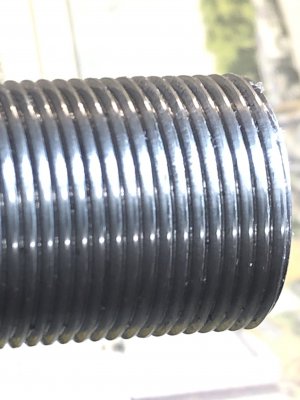not sure if this has been mentioned, but what are your turning finishes like? The reason I ask is sometimes insufficient preload can give those results, but that would also show up as a poor turning finish. You can test by mounting a DI or DTI to the head stock to read off the spindle flange, then without a chuck mounted, stick a broom handle in the spindle and pull up with ~50-60lb of force. Deflection on a roller bearing spindle should be <0.0005" (hopefully others with more experience of gear head lathes can chime in).
Personally I agree with the others that say to try a more forgiving material. I started with sch40 pipe, then alu, then steel. I don't think I've threaded stainless, though I have tapped a bunch.









